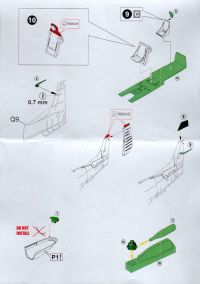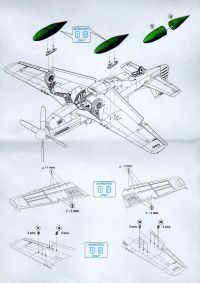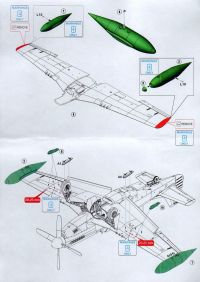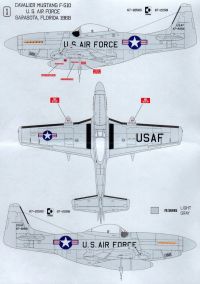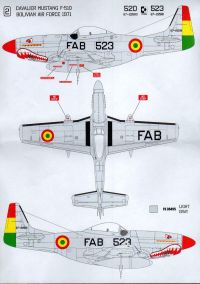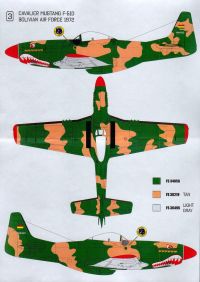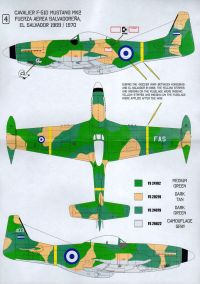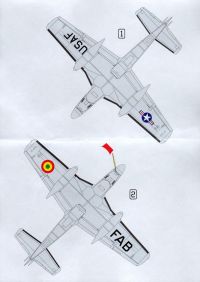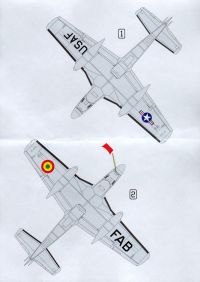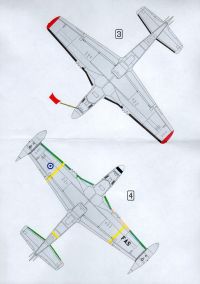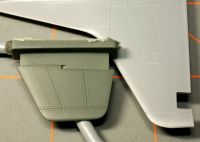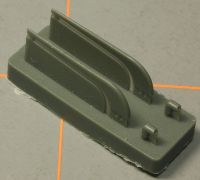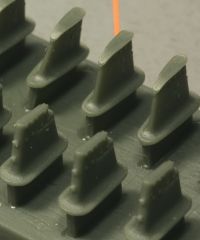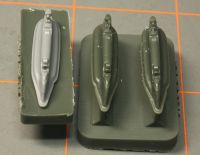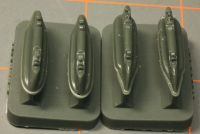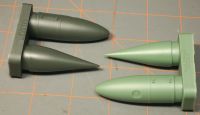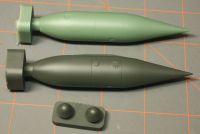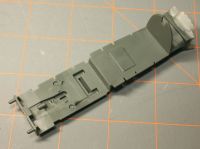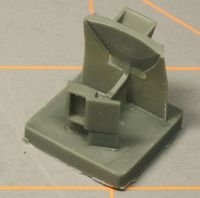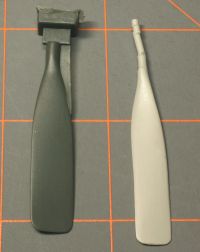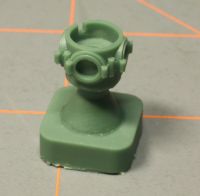Halberd Models | Cavalier F-51D Mustang/Mustang Mk 2 Conversion Set
Reviewed by Ray Peterson
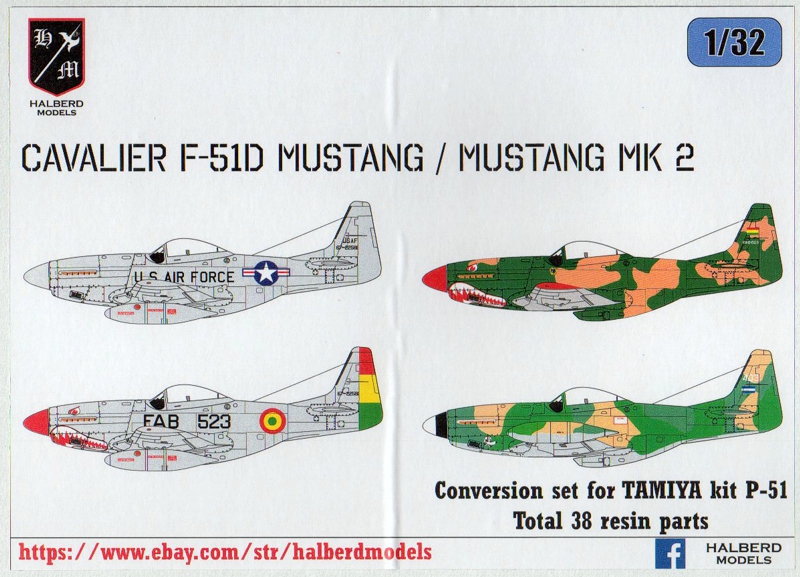
Introduction
In the late ’50s, Florida businessman David Lindsay, Jr. noted the increasingly large number of WWII fighters being sold as surplus if not scrapped. Amazing to us now, a low-time Mustang could be had for as little as $800 to $1600. His idea was to transform these old airframes into high-performance executive aircraft. He started a company, Trans-Florida Aviation, Inc – later re-named Cavalier Aircraft Corporation. He took a stock Mustang, stripped it of military equipment and weapons, and removed the fuel tank behind the cockpit. The airframe was totally overhauled with upgraded engine components, inspection and repair of the structure, re-skinning areas if necessary. Gun bays were converted to luggage compartments. A new Hamilton Standard prop was fitted. The cockpit was upgraded with sound-proofing, upholstery, updated avionics, and a new seat added in place of the fuel tank. From there, the plane could be customized to the buyer’s specifications.
With the successful sales of these first aircraft, Lindsay began buying up more airframes and Mustang spare parts. Additional options and upgrades began to be offered with variations in fuel capacity, including fitting of wing tip tanks, with the eventual offering of Cavalier 750, 1200, 1500 and 2000 models, all which roughly corresponded to their ranges. They also began adding the tall tail of the P-51H onto these models.
The successful conversion of these airframes caught the attention of the military, particularly the Defense Department, for the COIN (Counter-Insurgency) role, especially for actions in South America. In 1967, they contracted Cavalier to provide aircraft for their Project Peace Condor program. For these airframes, Cavalier completely dismantled them, strengthened the fuselage, plus beefed up the wing structure for additional weapons stations. The tall tail was also kept, and Merlin 620 engines were used. The six .50 cal machine guns were kept, and inboard pylons were stressed to carry either a 110 gal drop tank or up to a 1000 lb bomb. An additional six stations (three each side) could carry individual 5-inch rockets or LAU rocket pods. Like the civilian birds, the fuselage fuel tank was removed and a second seat for an observer/forward air controller was added, as well as the upgraded avionics. These machines became the Cavalier Mustangs or ‘Peace Condor’ Mustangs.
As a private venture, Lindsay took the COIN version another step further, hoping for a larger military contract, including with the US Air Force. The airframes were strengthened beyond the Peace Condor birds, and tip tanks added carrying up to 110 gals each. The strengthened wings carried six hardpoints, three each wing, capable of carrying a maximum payload of 5000lbs. The inner pylon could carry up to a 1000lb bomb, and the outer pylons could carry up to 750lb each, either rockets, bombs, or LAUs. These became known as Mustang IIs. The US military weren’t impressed enough to order any, though the handful built were sold through seemingly shady channels to South American countries.
The Conversion
Cavalier Mustangs have never been offered before in 1/32nd scale, but Halberd Models to the rescue! The conversion includes 42 resin parts, a 6”x 7.5” decal sheet, and five A4-sized double-sided instruction and markings sheets. It is intended for the Tamiya Mustang kits.
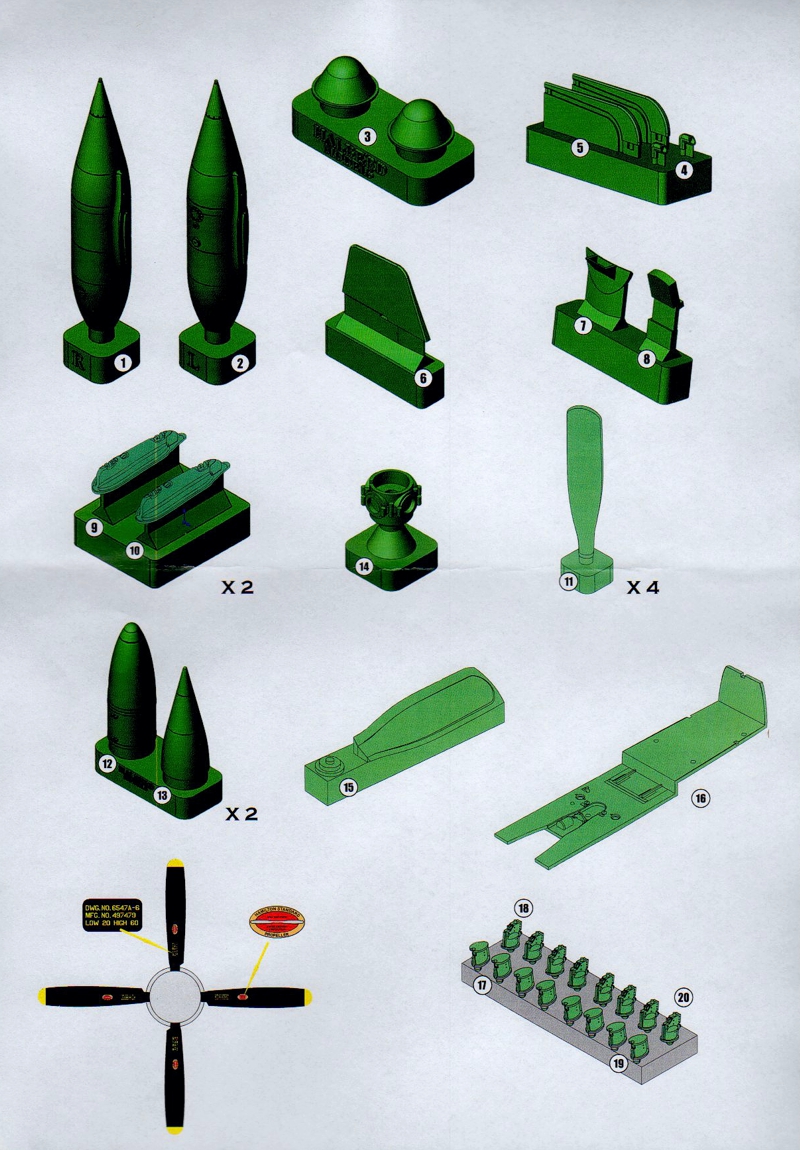
The quality of the castings is superb. I could not find an air bubble anywhere. I do not know if the masters were 3D printed, but I do not see any tell-tale signs of printing, either. The parts include a guide for setting the propellers, too.
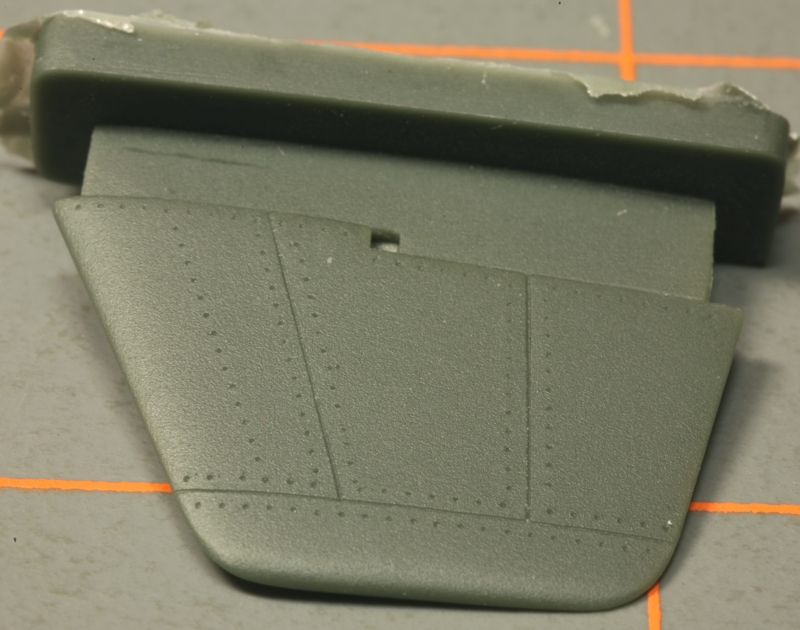
The extension for the tail has riveting to help match the Tamiya tail. The two antennas, one each side of the tail, are provided.
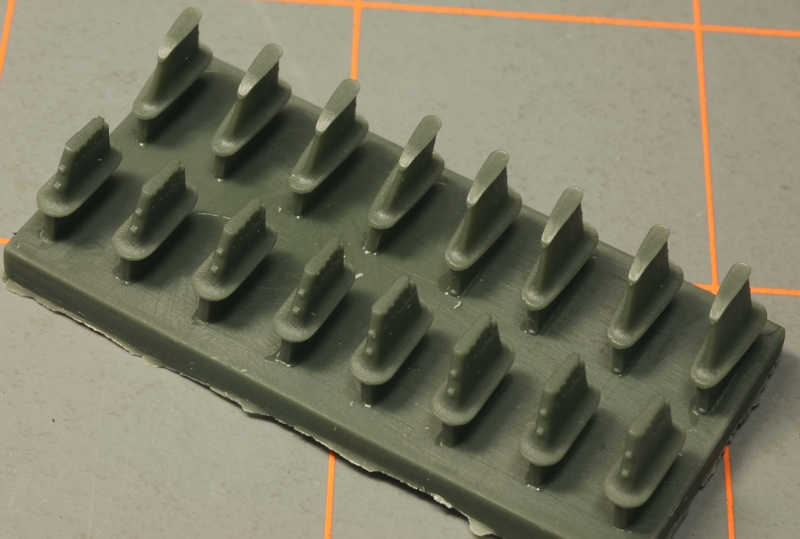
Eight sets of rocket launchers (no rails) and four pylons are included. The pylons are copies of the Tamiya part – also needed for the Mustang II – and the Tamiya sway braces are used.
Drop tanks and wing tip tanks are beautifully done. One photo I found shows a landing light in the nose of the port tip tank, so you may want to add a lens there, though the picture is probably a postwar photo of a show aircraft, so they may not be on the originals. Note they use a different color resin for each side of the plane to help keep them straight.
The cockpit gets a new floor, with the fuel tank behind the pilot gone. Instructions have you use both seats from the kit to add to the floor. I am not sure if the rear seat really is that design, but as I have yet to see any photos of the seat, who knows. The canopy gets a new part, too, the Tamiya canopy brace is removed. The set does not include the instrument upgrades in the cockpit, so you are on your own there. There is very little documentation on the cockpit, which might make it difficult to do, and is probably why they didn’t include it. So far I found a copy of the Cavalier manual that has some photos of the cockpit, but I am not sure if it is for the civilian or military version. I also found one photo of an ex-El Salvadorian plane that showed a partially complete instrument panel, but that was it. Note the Cavalier Mustang cockpits were finished in a more modern light grey.
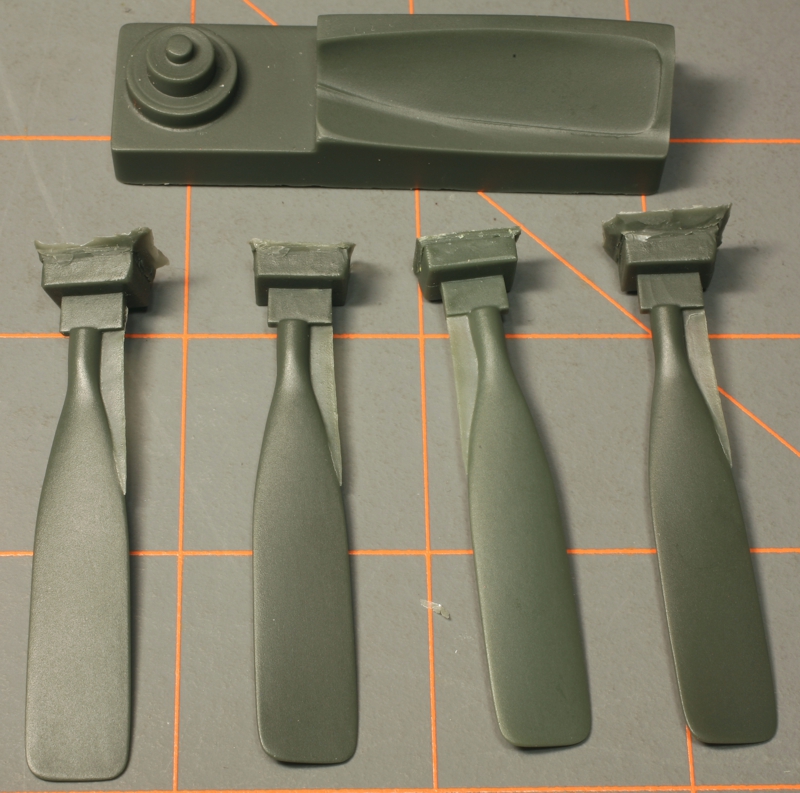
The props are beautifully done, as well as the hub, and the guide is a nice addition. I am not 100% sold on the width of the props, they might be a little wide. I found two post-war charts for the square-tip that give the dimensions of the prop, each with different numbers, wouldn’t you know. The later chart, which has wider dimensions, shows the new props about a millimeter wide. Looking at photos, some props appear narrower, but others make the conversion props look about right. It is hard to tell with the twist of the props. Length and tip radius match the chart. I have included a sample of a Grey Matter square-tip prop to show the difference, though according to the chart, the GM prop is about 1 mm too narrow.
Color Schemes
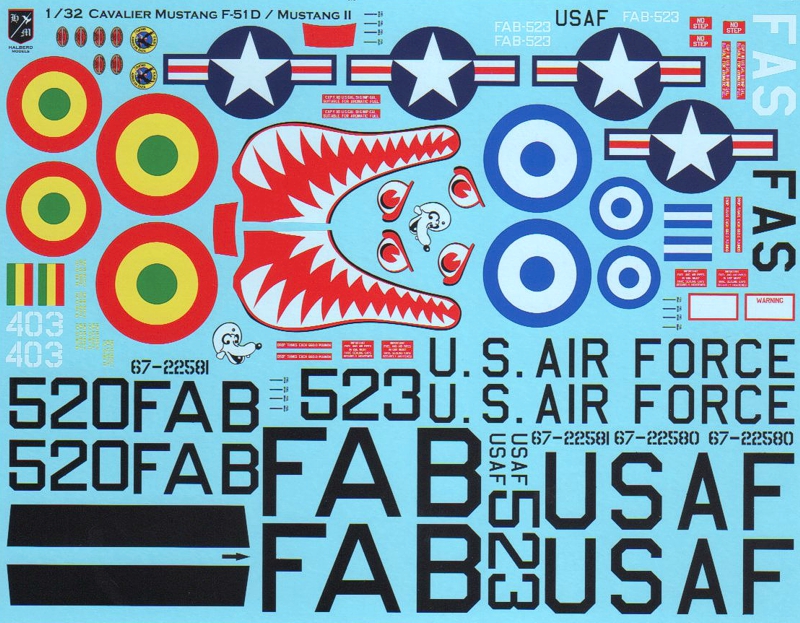
The decals look very nice and colorful. It includes national markings, serials, codes and a few stencils for four different schemes.
The conversion set gives you four different markings. The first is for two USAF birds, which are correct to what they once wore per pics, but they are really just Cavalier’s marketing, somewhat spurious, markings as the USAF never purchased either plane, and the second set of markings are for the same aircraft in their shark-nosed Bolivian scheme, which is where those two planes ended up. Incidentally, the USAF did get at least two aircraft which they used as chase planes for some program, you would just have to get the correct serial numbers.
The third scheme is for one of the same aircraft, now in a very colorful camouflage still with the sharknose.
The fourth scheme is for the only Mustang II covered, in its El Salvadorian colors. This is the hardest one to verify as there is so little out there in the way of photos. The one picture showing the included noseart shows it post Soccer War (or for our European members, Football War), about 1970, without tip tanks. It seems soon after the war started, the tip tanks were removed as the pilots felt they made the plane sluggish. I could find no photos showing the tip tanks were ever re-attached, though I suppose it is possible as they were having range issues without that fuselage tank in their Cavalier Mustangs. With the original Peace Condor/Mustang I machines, they used drop tanks, but the Mustang IIs didn’t have plumbed pylons. So, to totally be correct to the reference photo, there should be no tip tanks on that machine. (Note: if you build it with no tip tanks, the replaced standard tips were painted flat black.) There is no photo of 403 at the start of the war that shows where the noseart would be, so I don’t know if it was there or not. Also note, if you want to have the tip tanks, do not have either the yellow stripe or the fuselage roundels. They were added after the tanks were removed. You could also do the sister aircraft, 405, which did not have the noseart, but did have tip tanks at the start of the war.
Summary
This is a very well-done conversion set for a small but important part of the Mustang story, being the last chapter of its long combat history. It also provides a chance to paint a Mustang in some of the most colorful camo schemes the Mustang ever carried. The casting is first rate and offers several options.
Highly recommended.
Thanks to Halberd Models for the review set.
© Ray Peterson 2021
This review was published on Thursday, June 10 2021; Last modified on Sunday, June 20 2021

